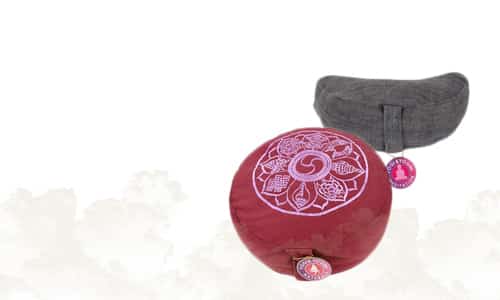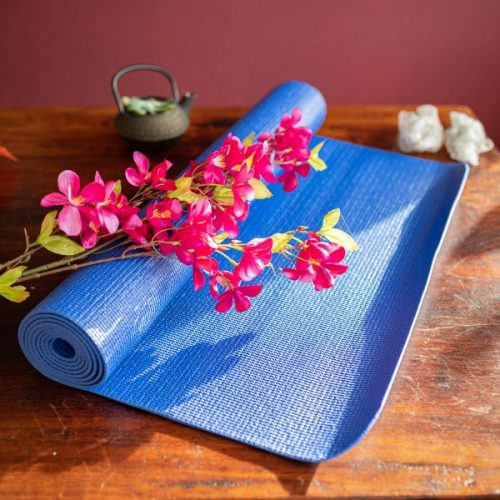Ayurveda is a health practice thousands of years old. But what exactly is it? You will discover it all in this blog!
What is Ayurveda exactly? You may have heard of it, because this Indian medicine is becoming more and more popular with us in the west. It has been around for about 5000 years! Ayurveda is an ancient health doctrine that divides the constitution of every person into three doshas: Vata, Kapha, and Pitta. Read on for a crash course on Ayurveda for beginners!
What Does Ayurveda Mean?
The Ayurveda meaning is ‘science of life’. According to this teaching, you are born healthy and happy. External influences could throw you off balance, making it harder to stay in this natural state of health and happiness. If your doshas are out of balance, you could become lethargic or sick. It is then up to you to restore the balance by, for example, eating healthy, using the right herbs, resting, or through yoga and exercise.
Ayurvedic Types
According to Ayurveda, there are three principles of life: the doshas. Those are a kind of internal cosmic forces that work together to sustain all living beings. So as a human being you have all three doshas in you, but usually one is dominant. That is your ayurvedic type whcih could be:
- Vata – agile and airy
- Pitta – volatile and fiery
- Kapha – stable and earthy
These three types are all cocktails of the five elements ether, air, fire, water, and earth. For example, vatas would be especially nice and airy, pittas particularly firey and kaphas calm and grounded or “earthy”.
Ayurveda Vata Type
Vata consists of the elements air and ether. Vata is about movement, breathing. It regulates heart rate and nerves. In addition, people with the Vata type tend to move quickly. Vatas are therefore bursting with enthusiasm and ideas. Because they process information at a rapid pace, these types are prone to mental fatigue. When Vata becomes unbalanced, they may become anxious or lie awake at night. Vatas therefore need a good portion of rest. Rest, combined with hearty food, helps them to keep their energy up. Airy Vata types do not gain weight quickly and are usually skinny.
The Ayurveda Type Vata is also compared to a deer. Deer are lightning fast both mentally and physically. Their big eyes look around and keep an eye on everything. Like deer, they are not overly strong physically, but quick, slender, and elegant. Just like a deer they are also quite smart and alert!
Ayurveda Pitta Type
A Pitta is the fiery type, but water would also play a role in this. Visualize powerful rapids and you’ll understand what we mean! They are often good speakers, they are inventive, ambitious, and are quick decision makers. But they can also be emotional and critical. When Pitta is out of balance, they tend to perfectionism, tantrums, irritability, or physical ailments such as skin rashes and inflammation.
Pittas are often compared to strong-willed Tigers. When a Pitta wants to achieve something, nothing can stop them. Tigers can focus on their prey for a very long time and wait for the right moment to attack. After they reach their goal, like tigers who have finished the hunt, Pitta types can laze around just fine. Pittas therefore value efficiency, which can cause them to be explosive – a tiger that is stopped in his tracks will show its teeth. A pitta is the type that honks very loudly during traffic jams, for example. Tigers are orange or reddish, the color of fire. So real energetic types!
Ayurveda Kapha Type
Kapha consists of water and earth. Kapha is the calm, content, patient, reliable, and confident type. The Ayurveda Type Kapha has a lot of stamina and lots of exercise will do them good. When Kapha is out of balance, this could lead to overweight or depressive feelings. They like a firm foundation and have a hard time letting go of things.
They are often compared to an elephant. You probably know the saying: “An elephant never forgets”. That’s right, elephants are great with long term, from their memory to long migrations. Kaphas do not get going quickly physically and mentally, but they do have enormous stamina. They simply move their large, strong body calmly. Sometimes they are immovable and steadfast. In their contact with others, these types are friendly and calm. Why not enjoy life?
The Ayurvedic Types and an Ayurveda Test
How the life forces vata, pitta, and kapha are distributed in you is determined at birth. You can compare that to a recipe. You may have quite a bit of kapha in your house, with just two tablespoons of pitta and a dash of vata. Such a recipe is called a constitution or Prakruti and can be measured in percentages by an Ayurveda constitution test. It shows at a glance what the ratios between the doshas are in you. Usually one is dominant, but sometimes two fight for influence. Then you get kapha-vatas, for example! With an Ayurveda Test you can deduce what you really need to nourish yourself and feel good. It may be very different from what you are expecting.
Ayurveda Against Hay Fever
In Ayurvedic teachings, hay fever is a Kapha-Pitta condition. Ayurveda could relieve hay fever complaints. It is best to find someone who is specialized in this health doctrine to help you. According to Ayurveda, Agni determines your health through the “fire” of digestion. Good digestion is an important part of curing hay fever. There is a good chance that a specialist will stimulate your Agni during a treatment. Ayurveda uses all kinds of herbs to influence Agni and soothe hay fever. They can be used to reduce Kapha, to reduce Pitta, or for the digestive system to address the cause of the allergy. Others can be used to improve overall immunity.
In short: you can use Ayurveda in all kinds of ways. If the hay fever has already started, a drink of fresh coriander may help to counteract the effect of the pollen. In addition, a spoonful of honey every day could help. If you suffer from a lot of allergies, it can help to eat mainly hot, fresh meals and skip leftovers. Try to skip spicy herbs and foods with a sour taste.
Ayurveda Yoga
Yoga & Ayurveda are closely linked. Many therapists or Ayurveda practitioners also have a lot of knowledge or experience with yoga. Yoga is originally a part of Ayurveda. The different asanas have their own influence on the balance of mind and body. For example, various yoga exercises can balance the three doshas for a healthy life. With Pranayama breathing exercises you would promote the coordination between body and mind. Meditation is a common practice to stimulate a calm mind and to help you explore the deeper layers of consciousness. This mental state in turn supports balance on a physical level. Yoga contributes to a healthy and happy life according to Ayurveda. Despite bumps in the road, yoga can provide more peace and stability in times of stress.
Check Out All of Our Yoga Products
Any More Ayurvedic Tips?
According to the ancient Indian health theory, there are countless tips to keep yourself vital and cheerful. For example, on Ayurvedic advice, you can use a Tongue Cleaner or a Neti Pot when you have a cold. Another popular Ayurvedic practice is drinking from Copper Bottles. Some people also swear by Making Gemstone Water for their daily fluid intake. So enough inspiration!























 Nederland
Nederland
 België
België
 Deutschland
Deutschland
 Europe
Europe
 España
España
 Sverige
Sverige
 Français
Français